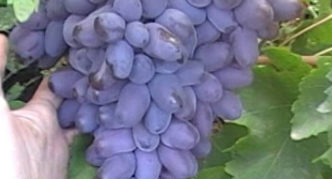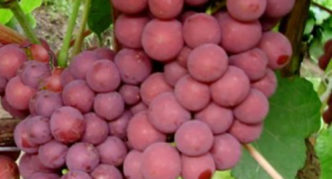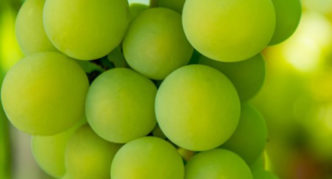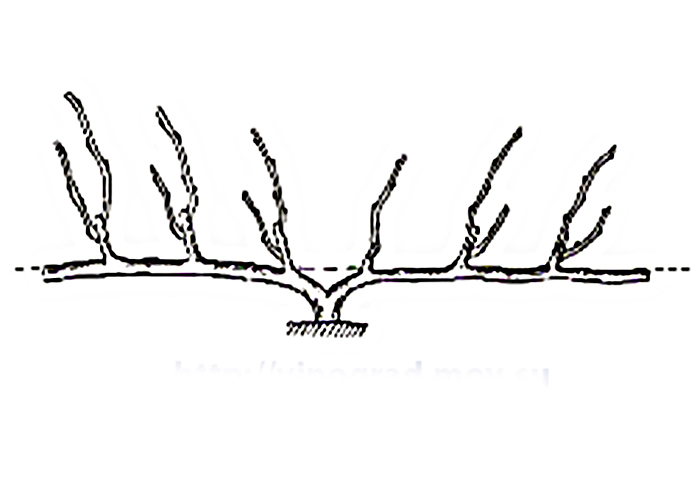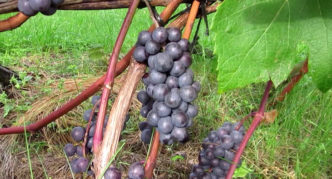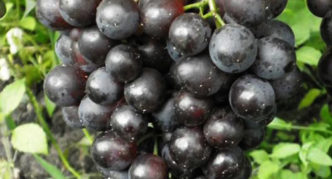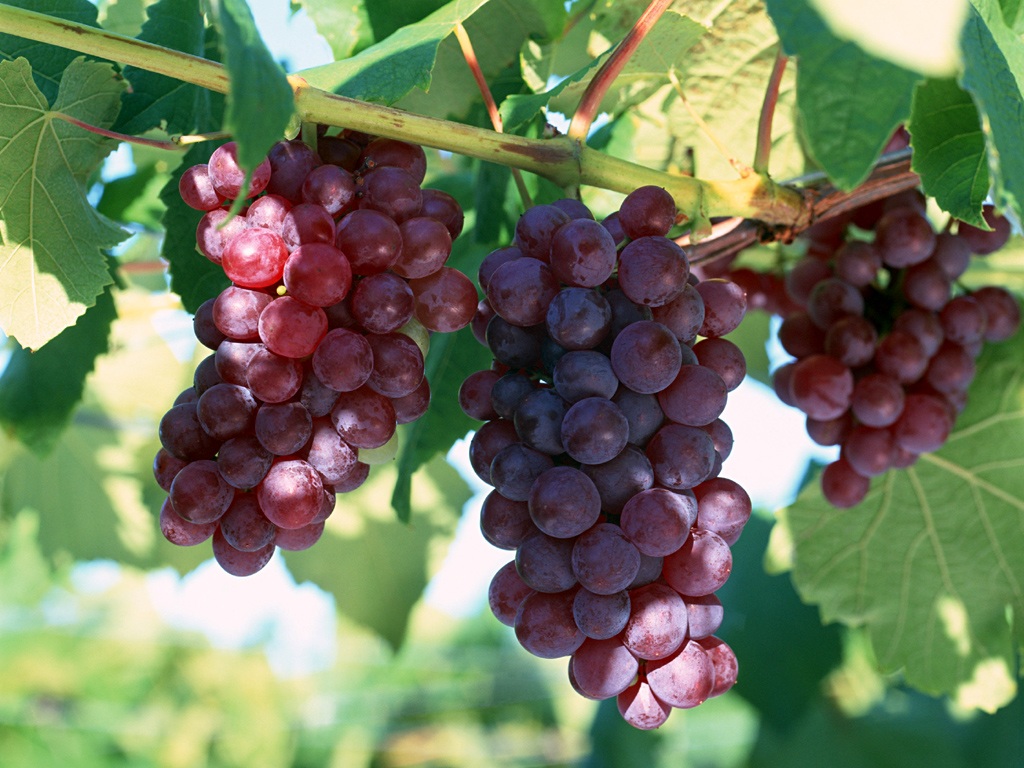The vine is getting closer and closer to the North Pole. Through the efforts of breeders, new hybrid forms appear that are not afraid of severe frosts. They are grown now in the Baltics, Canada, Sweden, Norway and in our suburbs, the St. Petersburg region, Siberia. One of these varieties is Zilga.
Content
Latvian beauty
The name Zilga is derived from the Latvian word zilgans, which means bluish or bluish. Indeed, the color of the berries of this grape has just such a shade.

The Zilga grape, universal for its purpose, ripens in 100-110 days after the leaves on the vines have opened.
Zilgu was bred by the Latvian breeder Sukatnieks in the sixties of the last century, using as the initial forms the Moldavian grapes Smuglyanka, the Latvian Dvietes zila and the Yubileiny Novgorod bred in 1937 by the Michurin Central Genetic Laboratory.
Portraits of the older generation in the Zilgi family - photo
- The dark woman
- Dvietes zila
- Jubilee Novgorod
There is an opinion that it is very difficult to grow grapes in the Moscow region. But the northern climate gives several advantages - there are not many pests and diseases of this plant, which are common in the southern regions:https://flowers.bigbadmole.com/en/yagody/vinograd/vinograd-vyrashchivanie-v-podmoskove.html
What will make Zigla happy
The Zilga grape, universal for its purpose, ripens in 100-110 days after the leaves bloom on the vines. It is one of the fastest ripening varieties in northern viticulture. At the same time, shoots ripen very well on its tall bushes. Up to 85% of them are fertile.
Zilgi flowers are bisexual, there are no problems with pollination of flowering brushes.
Bunches of average weight (up to 400 g) consist of dark berries, weighing an average of 4.3 grams, covered with purine, which is why their shade, which gave the name to this hybrid form, is bluish. Grape juice is weakly colored.
By the time of harvest, Zilgi berries accumulate 18-22% sugar and up to 5 grams of acids in a liter of juice. On the tasting scale, Zilga has a score of 7.1 points.
This form of grapes is resistant to cold temperatures down to -25 ºС, damage to real and downy mildew and gray mold.
Zilga grapes (video)
Important points of planting Zilgi on the site
There are no fundamental differences in planting Zilgi from other grape varieties. Several points are worthy of mention.
- Despite all the "northerly" varieties, the place for grapes is chosen in the best way warmed up and illuminated by the sun, the least accessible to the winds.
- Undesirable is the occurrence of groundwater close to the surface, stagnant water in the place of growing grapes when snow melts or heavy rainfall.
- Planting Zilgi can be in spring and autumn. In the fall, place a seedling on the site at least a month before the onset of cold weather.
- The grape planting site (pit, ditch or trench) is prepared in advance: for planting in spring - from autumn, for planting in autumn - during the summer, but no later than two months before planting. At the same time, at least two buckets of humus are introduced at the bottom of the depression for each plant.Heavy soils are made looser by mixing the soil with peat and sand in a 1: 1: 1 ratio, and a drainage layer is laid at the bottom of the pit (broken brick, fine gravel, etc.).
- Recommended arrangement of grape seedlings 3x1.5: step in a row - 3 meters, distance between rows - at least one and a half meters.
- Tall bushes of Zilga certainly need support - one- or two-row trellises, tents, pergolas at least two meters high. You can plant a plant near a house or outbuilding, but at a distance of at least 0.5 meters from the foundation.
- The first week after planting, the grapes must be actively watered, spending two to three buckets of water per plant. This is especially important on soils that conduct water well.
Taking care of Zilga
In the fall of the second year after planting Zilgi, the bush begins to form. The way the vine is formed can be different depending on the climate of the area in which the grapes are grown. With uncovered cultivation, the formation can be high-standard. In Siberia and Altai, they use the form of a two-arm horizontal cordon, as close as possible to the ground.
For covering cultivation, a bush is formed in the form of a fanless fan or with a minimum stem height, so that it is easier to bend the vine to the ground.
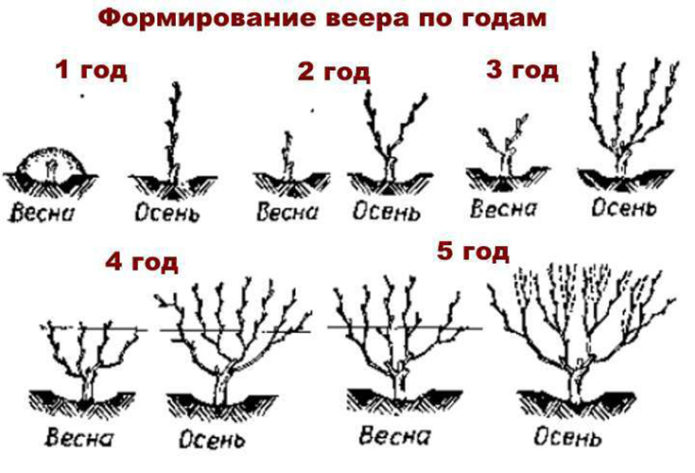
For covering cultivation, a bush is formed in the form of a stumpless fan or with a minimum trunk height, so that it is easier to bend the vine to the ground
An example of the formation and cultivation of Zilga in Siberia.
Zilga in Krasnoyarsk (video)
Regardless of the region of growth, the grapes are pruned at the most favorable air temperature for this purpose. In areas with a southern climate, it is established earlier than in northern ones:https://flowers.bigbadmole.com/en/uhod-za-rasteniyami/obrezka-vinograda-vesnoy.html
In the future, in the spring, dried, frozen, broken off branches are removed from the grapes. In the summer, barren and redundant shoots are cut out. The formation of the bush continues in the fall. If autumn pruning has not been done, it can be done in early spring before bud break, the sooner the better ..
Of the fertilizers that are applied from the second year of the plant's life on the site, Zilga prefers organic matter - compote or rotted manure.
The soil under the Zilga bushes should be weeded out or, as an alternative, mulching with organic substances - compost, mown grass, hay - should be used. The mulch layer should be 5 cm or more.
An indispensable condition for growing Zilgi is regular watering so that the soil does not dry out.
Who is the sweetest in the world
To bring out the best and the negative side of Zilga grapes, it is best to compare them with similar ones. As the main parameter, you can take the ripening period of the crop. Lepsna grapes of Lithuanian selection and Cosmonaut of Russian selection are similar to Zilga in this size.
| Zilga | Lepsna | Cosmonaut | |
| Assignment of the variety | universal | universal | dining room |
| The power of growth | big | big | big |
| Crop ripening in days from the beginning of the growing season | 100–110 | 100–105 | 100 |
| Fruitful shoots | 85% | 75–80% | 89% |
| Average bunch size in grams | 400 | 170–200 | 220g |
| Average berry size in grams | 4,3 | 2–4 | up to 2.9 |
| Sugar | 18–22% | 22% | 18,4 |
| Titratable acids in grams per liter of juice | 5 | 4 | 4,8 |
| Taste | light nutmeg | light labrusca | sweet |
| Tasting score in points | 7,1 | 7,1 | 7,9 |
| Resistance to frost in ºС | -25 | -28–30 | -24 |
| Resistant to mildew, powdery mildew, gray mold | high | to mildew, gray rot high, oidium sufficient | to mildew, oidium unstable |
From the above data, it can be seen that Zilga is slightly inferior to the Cosmonaut in terms of the number of fruitful shoots and tasting assessment, and Lepsne - in frost resistance and the amount of sugar in berries, but in other characteristics, and especially in resistance to powdery mildew and gray rot, it surpasses them.
Everyone who grows grapes on their site knows how much work goes into caring for this plant, and therefore must be able to cope with a variety of diseases and pests:https://flowers.bigbadmole.com/en/yagody/vinograd/bolezni-vinograda-opisanie-s-fotografiyami-i-sposobyi-lecheniya.html
Comparable grape varieties in the photo
- Zilga grape
- Lepsna grape
- Grape Astronaut
Reviews of the Zilga grape
Surrounded by mildew-infested bushes, Zilga shows excellent resistance - a 1-point lesion: there is a pinpoint lesion of the leaves without the growth of conidiophores.
Zilga bears fruit well in large formations. The variety is productive, gives a large number of fruitful shoots. In Lithuania, it is used for landscaping farm buildings, various types of arbors, arches. The berries are used fresh and for homemade wine.
Zilga is the most adapted form to our conditions in my vineyard. Always a good harvest with good sugar accumulation, usually 22% in almost any summer - hot, cool, rainy, dry. Not sick, wasps do not touch, does not crack, can hang until late autumn, the vine ripens to the very tips. It is the only grape variety that goes through all stages of vegetation up to leaf fall, with beautiful autumn colors. This variety is not for everybody. And the wine from it is good.
For some reason, no one mentioned the least whimsical variety for Moscow and Peter Zilg, in the Baltic selection. Not one decade has been growing and every year good and ripe! Yields. Isabella's taste. Yes, bony, not goaty ... But you can get good wine! Yes, and mother-in-law loves to wrap cans of fruit drink from it. In winter you drink and go crazy with the isable aroma. Because of the last influences of harm from Labruscans, you stopped making wine from it.
Zilga began to stain on July 16. Moreover, at the same time - and trench and trenchless. This year, after removing the winter shelter, I carefully expected the start of shoot growth in order to cover it from the spring frosts. The shoots began to grow, there were no frosts, therefore, I was guided not by the messages of the hydrometeorological center or the dates of frosts of previous years, but by the readings of the bird cherry. As soon as she was ready to dissolve the flowers, I covered the grape bushes with foil. Almost all.
Last season, my ZILGA was one of the most attractive varieties (GF) on the site. Excellent taste, high sugar ... Naturally, it does not reach the wine ... It is eaten clean.
Iron grade for northerners !!! Zilga and Juoduppe last year pollinated under extreme conditions, fog in the morning, rain in the afternoon, cold at night, and at least something ... pollinated by 5+. In business. And some of the few ripened, although the summer was not a beautiful one. I like the taste, I will add a couple more bushes.
The Zilga grape has proven itself well in areas of non-traditional viticulture, it is loved by gardeners for its trouble-freeness, resistance to cold and disease. It is successfully cultivated even by novice winegrowers.
